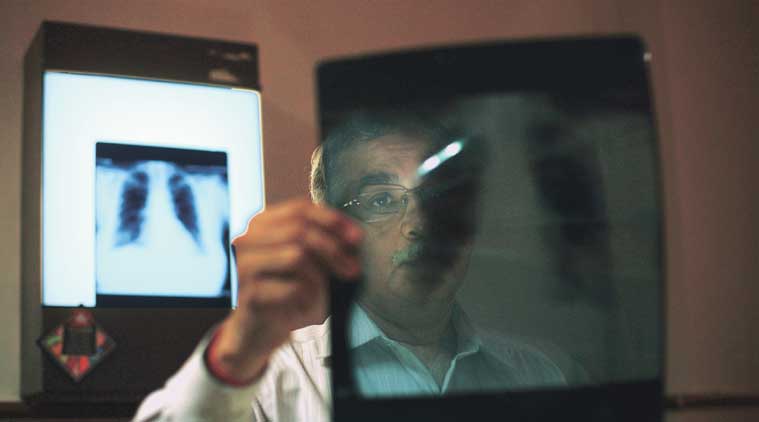India has the highest burden of TB mortality in the world. In 2017, India saw 4,21,000 deaths due to the disease followed by 1,55,000 in Nigeria and 1,16,000 in Indonesia.

Air pollution levels and drug susceptibility testing are among several areas that India needs to make improvements in in its fight against tuberculosis (TB), according to a Lancet Commission report released on Thursday. The Lancet panel released report cards for 10 countries with high burden of tuberculosis.
India has the highest burden of TB mortality in the world. In 2017, India saw 4,21,000 deaths due to the disease followed by 1,55,000 in Nigeria and 1,16,000 in Indonesia.
In 2017, India accounted for 27.3 per cent of the global burden of TB.
According to the report card, India is “on target” in areas like tobacco taxation, and is “high” on political will but “needs improvement” in air pollution levels, anti-retro viral treatment for HIV patients and meeting UN diagnosis and treatment targets on drug susceptibility testing.
Authors of the report have stressed the need for accountability and created individual report cards monitoring progress in fighting the disease, political will and financing for the ten high-burden countries, including South Africa, Bangladesh and Pakistan, among others. This is part of the Lancet TB Observatory — an independent annual report evaluating progress towards the 2022 UN High Level Meeting targets that will be launched.
Recently, the Centre had committed to eliminate TB from India by 2025 — five years ahead of the official UN target set for 2030. The report is being published ahead of World TB Day — March 24 — and researchers have said a world free of TB is possible by 2045 if increased political will and financial resources are directed towards priority areas.Tuberculosis can be treated, prevented and cured, yet it kills 1.6 million people a year, more people than any other infectious disease.
Report may shape roadmap to end TB
The Lancet Commission on Tuberculosis, released today, outlines what is needed to end TB — political will and funding, so that new prevention methods and treatments can be developed and made accessible to those who need them. The report finds preventive treatment could interrupt the cycle of infection, illness and death. WHO’s End TB Strategy target of reducing TB mortality by 90% by 2030 will not be reachable without a substantial increase in global R&D investment, from 2 million per year in 2017 to at least billion per year in the next four years.
“The report is optimistic about ending TB, but there is no room for complacency in our work, and we must act quickly and strategically to save the next generation from TB,” says lead Commissioner Dr Eric Goosby, UN Special Envoy on Tuberculosis, University of California San Francisco, US.
The WHO first declared TB a public health crisis in 1993, and in 2018, the first-ever UN High-Level Meeting on TB made ending the disease a global priority. This included ambitious goals to treat 40 million people and to prevent 30 million new cases between 2018-2022.
According to the report, in India, if diagnostic tests are subsidised and patients supported to complete treatment (in predominantly private healthcare), more than one quarter (28 per cent) of TB deaths could be averted over the next 30 years. This would cost an extra US$290 million each year, which is significantly less than India’s US$32 billion losses associated with TB mortality each year, the report has said.
One of the co-authors of the report, Dr Nalini Krishnan, Director of Resource Group for Education and Advocacy for Community Health, India, told The Indian Express that India has shown strong political commitment to ending TB. The TB programme, she said, has moved into high gear, prioritising person-centered care, engaging the private sector and focusing on prevention. But India must now accelerate on three fronts — involving TB survivors and affected communities as key drivers of the TB response, improving the quality of care of TB services and integrating TB services into the primary health system to reduce diagnostic delays and out-of-pocket expenditure, she added.
Officials at the Central TB division, Union Ministry of Health and Family Welfare, said that reaching out to patients, ensuring adherence to treatment and other strategies have seen an additional six lakh patients notified in the revised national tuberculosis control programme.
Source: Read Full Article





